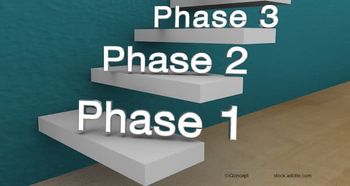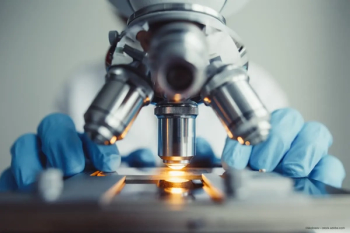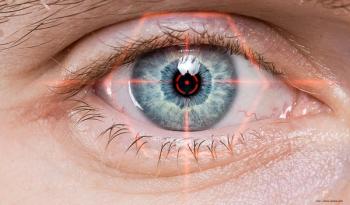
Paediatric myopia study indicates lens thickness and power changes closely associated with age
The study assessed a large paediatric cohort for changes in spherical equivalent refraction, axial length, lens power and lens thickness
A new study from researchers in China reported that the onset of myopia is heralded 1 year prior by accelerated changes in the spherical equivalent refraction (SER) and axial length,1 but no changes in the lens power and thickness were seen in paediatric patients, reported first author Jiaqing Zhang, MD, from the State Key Laboratory of Ophthalmology, Zhongshan Ophthalmic Center, Sun Yat-Sen University, Guangdong Provincial Key Laboratory of Ophthalmology and Visual Science, Guangdong Provincial Clinical Research Center for Ocular Diseases, Guangzhou, Guangdong, China.
Changes in the SER and axial length have been reported previously,2-5 but studies have been inconsistent regarding the findings in the crystalline lens before myopia development.
For example, the CLEERE study4 reported that the crystalline lens stopped thinning and losing power within ±1 year of myopia onset. However, the SCORM study6 reported an increased rate of lens power loss up to 1 year before myopia onset, followed by rapid deceleration. Conversely, Xiang et al.3 and Xiong et al.5 showed no significant changes in the crystalline lens among Chinese children over follow-up periods of 4 and 2 years, respectively. These discrepancies may stem from variations in ethnicity, age, environmental factors or methodologic differences across studies, the investigators of the study under discussion explained.
Zhang and colleagues stated, “A deeper understanding of biometric changes before and after myopia onset is essential for elucidating the mechanism underlying myopia development.”
Prospective cohort study
The aim of this study was to investigate changes in the crystalline lens before and after myopia onset in a large cohort of Chinese children over a 5-year follow-up period.
The study participants were initially emmetropic or hyperopic at baseline and were followed for 5 years, during which they were divided into two groups: 1,669 patients who developed myopia (newly developed myopes [NDM]) and 4,259 who remained hyperopic or emmetropic (persistent nonmyopes [PNM]), the investigators explained.
Zhang and colleagues evaluated the changes in the SER, axial length, lens thickness, and lens power from 5 years before to 4 years after myopia onset. The age-related trends in the SER and biometric parameters were compared between the two groups.
The mean baseline age of the children (55.20% male) was 7.61 ± 2.68 years (range, 3–14 years).
The investigators reported, “Compared with the PNM group, the NDM group exhibited a faster myopic refraction shift, accelerated axial elongation, and more rapid reductions in lens thickness and power. Changes in the SER and axial length peaked at 1 year before myopia onset (P < 0.001), but the lens thickness and power remained relatively stable before myopia onset. The rate of change in the SER and biometric parameters all slowed after myopia onset.”
They also observed that in the PNM group, the lens thickness decreased before age 11 and increased thereafter, whereas the lens power decreased continuously, with a slower rate of decline after 11 years of age.
“In conclusion, our study revealed that the axial length and SER changes peaked during the year before the onset of myopia, whereas the lens thickness and lens power remained relatively stable before and after myopia onset, with changes primarily associated with age,” the authors summarised.
References
Zhang J, Jin L, Chen Q, et al. Changes in lens thickness and power before and after myopia onset. Invest Ophthalmol Vis Sci. 2025;66; doi:
https://doi.org/10.1167/iovs.66.3.36 Xiong S, Zhang B, Hong Y, et al. The associations of lens power with age and axial length in healthy Chinese children and adolescents aged 6 to 18 years. Invest Ophthalmol Vis Sci. 2017;58:5849–5855.
Xiang F, He M, Morgan IG. Annual changes in refractive errors and ocular components before and after the onset of myopia in Chinese children. Ophthalmology. 2012;119:1478–1484.
Mutti DO, Mitchell GL, Sinnott LT, et al. Corneal and crystalline lens dimensions before and after myopia onset. Optom Vis Sci. 2012;89:251–262.
Xiong S, He X, Sankaridurg P, et al. Accelerated loss of crystalline lens power initiating from emmetropia among young school children: a 2-year longitudinal study. Acta Ophthalmol. 2022;100:e968–e976.
Rozema J, Dankert S, Iribarren R, Lanca C, Saw SM. Axial growth and lens power loss at myopia onset in Singaporean children. Invest Ophthalmol Vis Sci. 2019; 60: 3091–3099.
Newsletter
Get the essential updates shaping the future of pharma manufacturing and compliance—subscribe today to Pharmaceutical Technology and never miss a breakthrough.












































